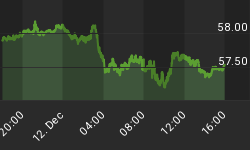The International Energy Association (IEA) has spoken. What the world needs now is a clean energy technology revolution.
June saw the 2010 launch of IEA's biannual report, Energy Technology Perspectives. Speaking at the launch was Nobuo Tanaka, executive director for IEA. The Gulf oil spill, he said, could prove to be a tipping point in the world's energy consumption habits. He added that the disaster serves as a tragic reminder that our current path is not sustainable.
As far as the IEA is concerned, this is probably a very important moment to start looking at alternative energy sources. If we, as a collective group of consumers, continue on the business-as-usual path, the scenario for 2050is looking grim.
This baseline scenario sees carbon emissions rising by 130%, with power generation accounting for 44% of total global emissions in 2050. Oil demand will be up by 70% - that's five times the oil production in Saudi Arabia today. I'll leaveyou to imagine what this means from an energy security perspective.
The other scenario offered by the publication, known as BLUE Map, is the "target" scenario. It assumes that all carbon emissions will be reduced by 50% by 2050 and suggests the least costly way to get there. This 50% reduction, the IEA insists, is the absolute minimum, should we want to keep climate change within the moreacceptable 2-3 degree change.
The main focus of this scenario is, of course, weaning the world off fossil fuels. Carbon intensity of energy use would have fallen by 64% by 2050. Demand for coal would drop by 36%, gas by 12%, and oil demand by 4%. Renewable energy would be providing a hefty 40% of primary energy supply and 48% of the electricitygenerated. As for cars, 80% will be electric, hybrid, or hydrogen-fueled.
And while the world is expected to reduce emissions by 50% by 2050 in the BLUE scenario, it is the OECD that will bear the real burden. Non-OECD countries can get away with just a 50% reduction; OECD countries are looking at cutting 70-80% of their 2007 emissions. This would mean that the electricity sectorfor these 32 countries would have be "almost completely decarbonized" by 2050.

A portfolio of technologies needed to achieve the carbon emissions under the BLUE Map scenario
So what needs to be done to make this work? Well, gird your loins - the "top priority" will be to increase energy efficiency, reduce energy consumption,and lower energy intensity.
But there's also some exciting news. The revolution is already under way.
On a global scale, total investment into technology and its deployment between now and 2050 would be about US$45 trillion - 1.1% of average annual global GDP over the period. The good news is, that investment has already begun all around the world.
Even as China grudgingly accepts the mantle of the biggest energy consumer, investment dollars are being poured into renewable energy research. China has already surpassed the United States as the largest producer of clean energy,whether it be hydro, wind, solar, or nuclear.
Germany, Europe's powerhouse, is lining up renewable energy to compete with nuclear. Currently getting 10% of its energy from renewable energy, Germany's renewable numbers for 2020 are projected at 38.6% electricity, 15.5% heatingand cooling, and 13.2% of the transport sector.
And in the United States, the Obama Administration has been pushing for, and encouraging, clean energy research and development since it came into power. On display are a variety of subsidies and loans guaranteed to tempt even themost conservative producer.
Whether it's the 30% cash up-front that the government is willing to give renewable energy projects or the vast amounts of cash injections into various energy technologies programs, renewable energy is set to take off in America.
For those investment portfolios that have taken a hit from the BP and Enbridge oil disasters, the IEA report is only going to spur up greater interest in the renewables game. Knowing which companies are enjoying political favor from Washington to Berlin and are at the receiving end of substantial grants is a sure-fire way to repair the damage.
















